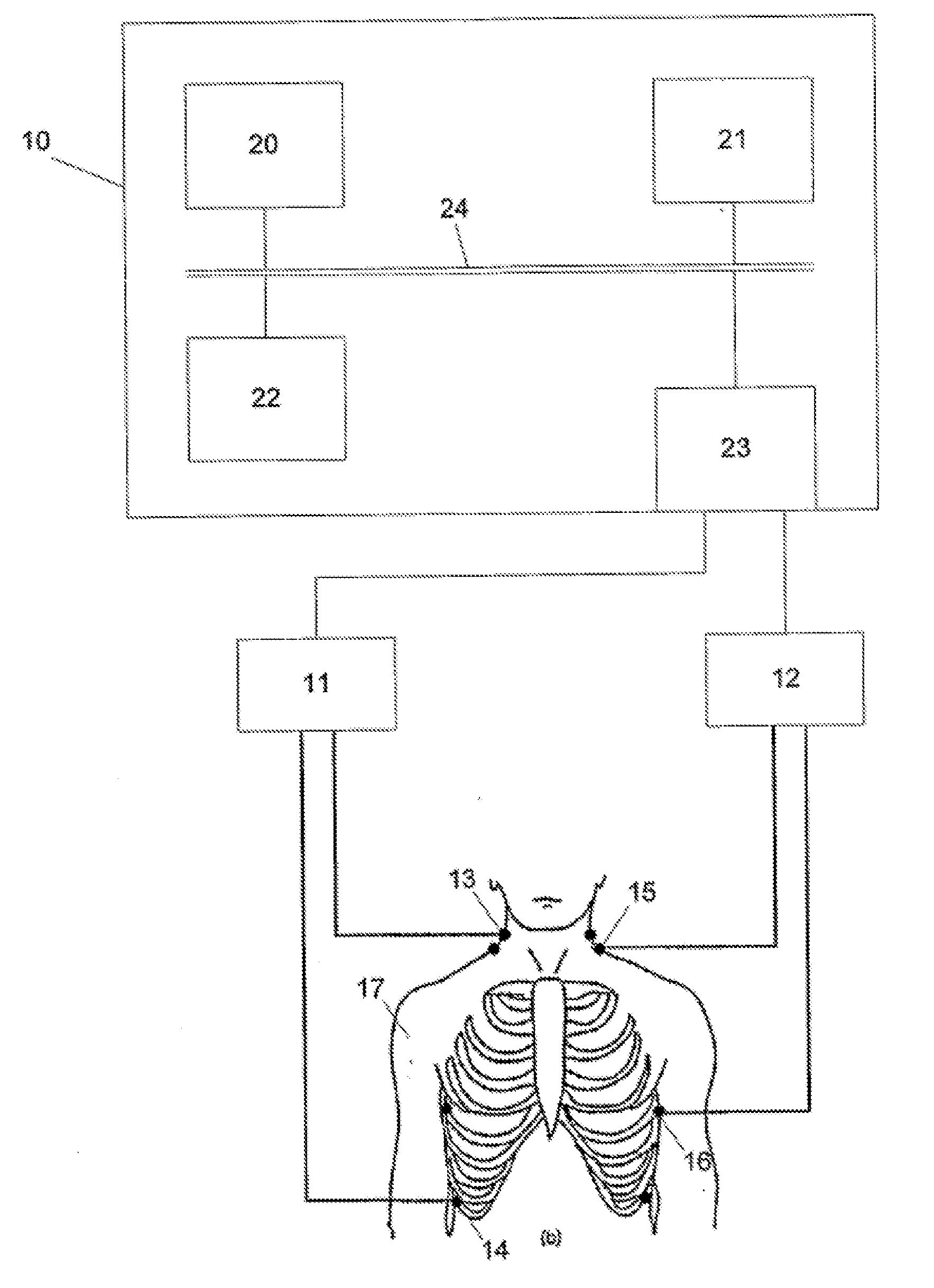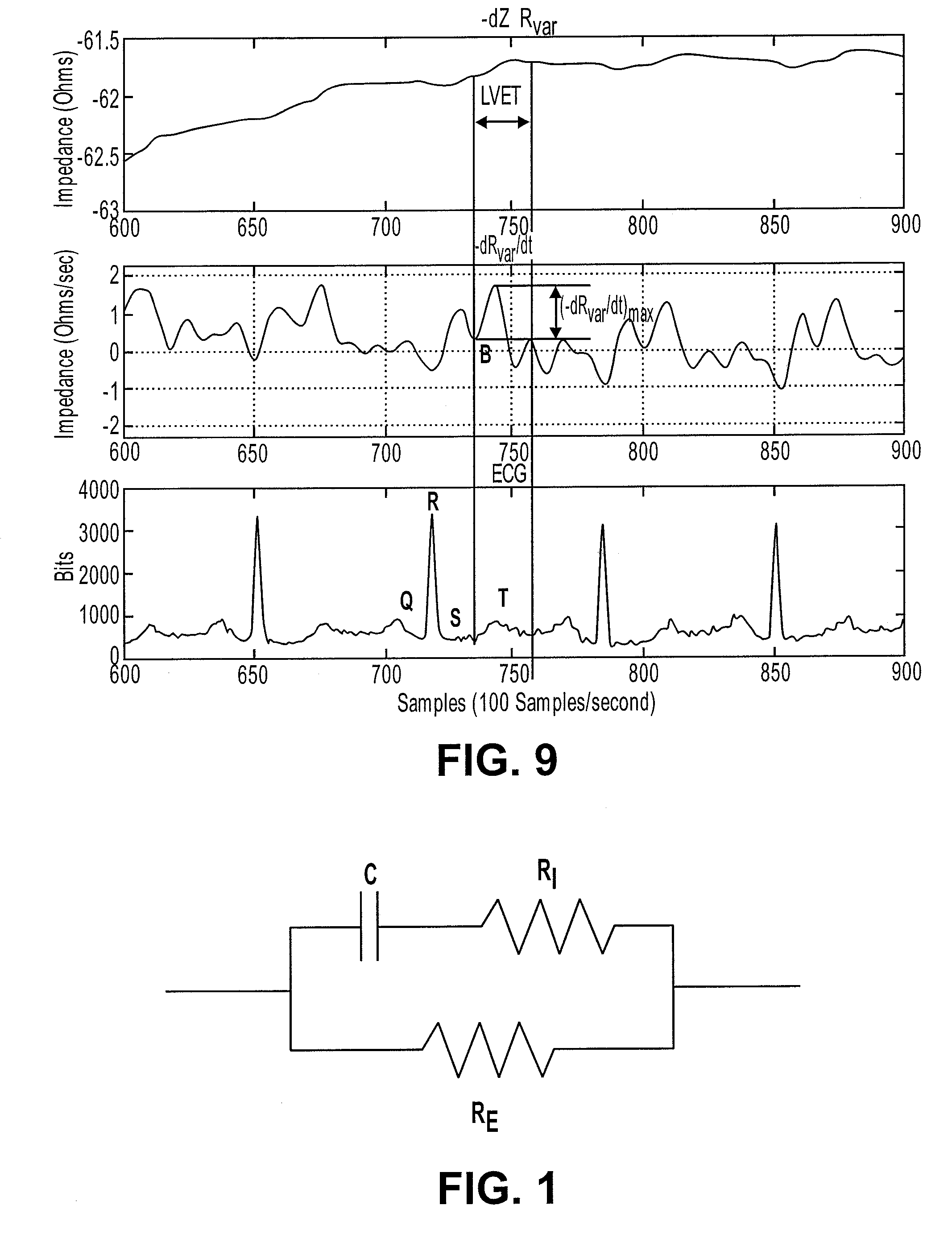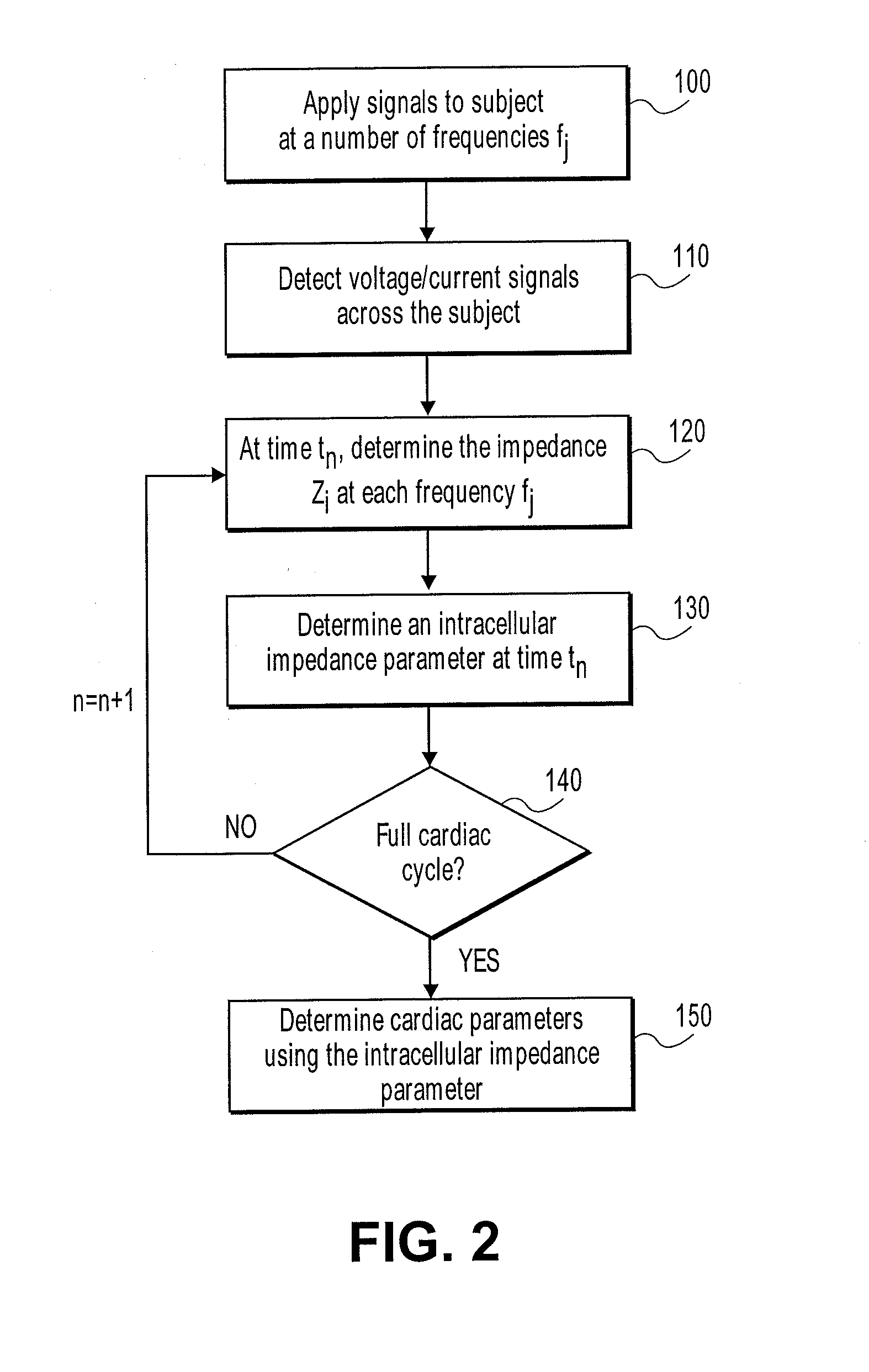Cardiac monitoring system
a monitoring system and cardiac catheter technology, applied in the field of cardiac catheter monitoring system, can solve the problems of fragile signal with low signal to noise ratio, inability to accurately model the bioimpedance response of subjects, and the increasing burden of cardiovascular diseases around the world
- Summary
- Abstract
- Description
- Claims
- Application Information
AI Technical Summary
Benefits of technology
Problems solved by technology
Method used
Image
Examples
Embodiment Construction
[0037] An example of a process for determining parameters of cardiac function relating to a subject is described with reference to FIG. 2.
[0038] In particular at step 100, alternating electrical signals are applied to the subject at a number of different frequencies fi, with electrical signals across the subject being detected at each of the respective fi, at step 110. The nature of the signals applied and detected will depend on the implementation as will be described below.
[0039] At step 120, at a first time instance tn the impedance Zi at each frequency fi is determined. At step 130, the impedance is used to determine an intracellular impedance parameter at the time tn. In one example, this is achieved utilising an appropriate model, such as a CPE (constant phase element) model, which will be described in more detail below.
[0040] This is performed for a number of sequential time instance tn, tn+1, tn+2 until it is determined that a complete cardiac cycle has been analyzed at s...
PUM
 Login to View More
Login to View More Abstract
Description
Claims
Application Information
 Login to View More
Login to View More - R&D
- Intellectual Property
- Life Sciences
- Materials
- Tech Scout
- Unparalleled Data Quality
- Higher Quality Content
- 60% Fewer Hallucinations
Browse by: Latest US Patents, China's latest patents, Technical Efficacy Thesaurus, Application Domain, Technology Topic, Popular Technical Reports.
© 2025 PatSnap. All rights reserved.Legal|Privacy policy|Modern Slavery Act Transparency Statement|Sitemap|About US| Contact US: help@patsnap.com



